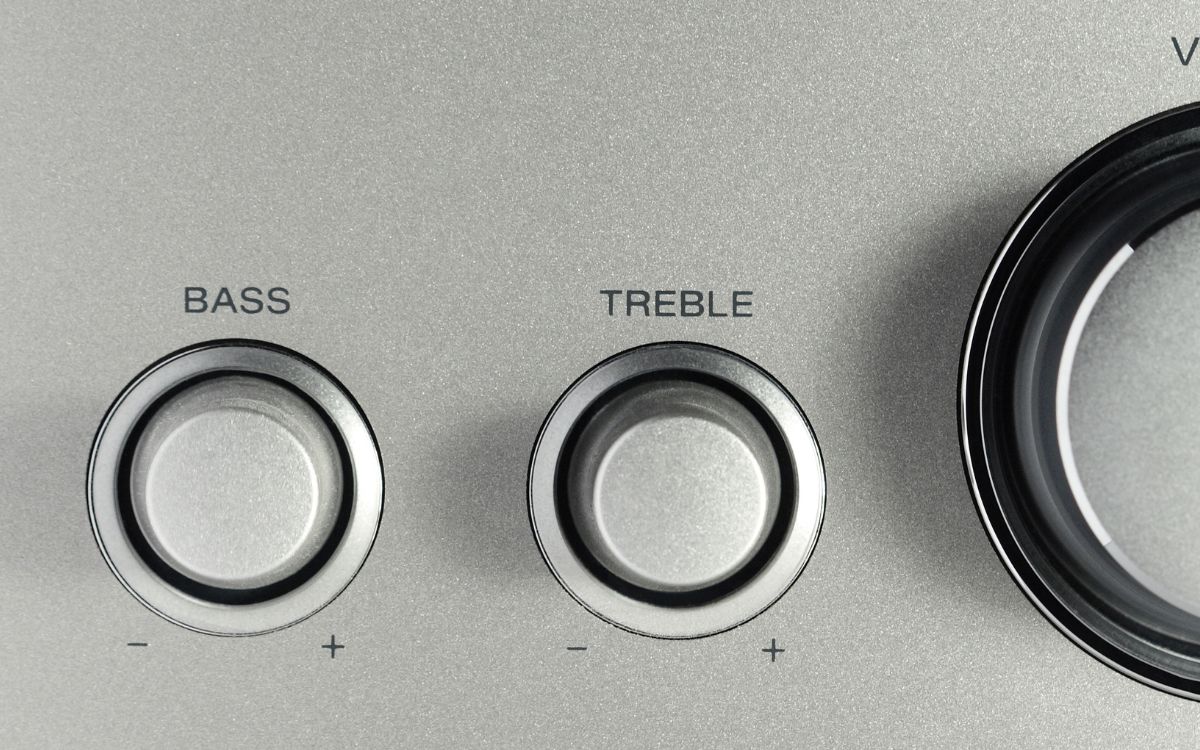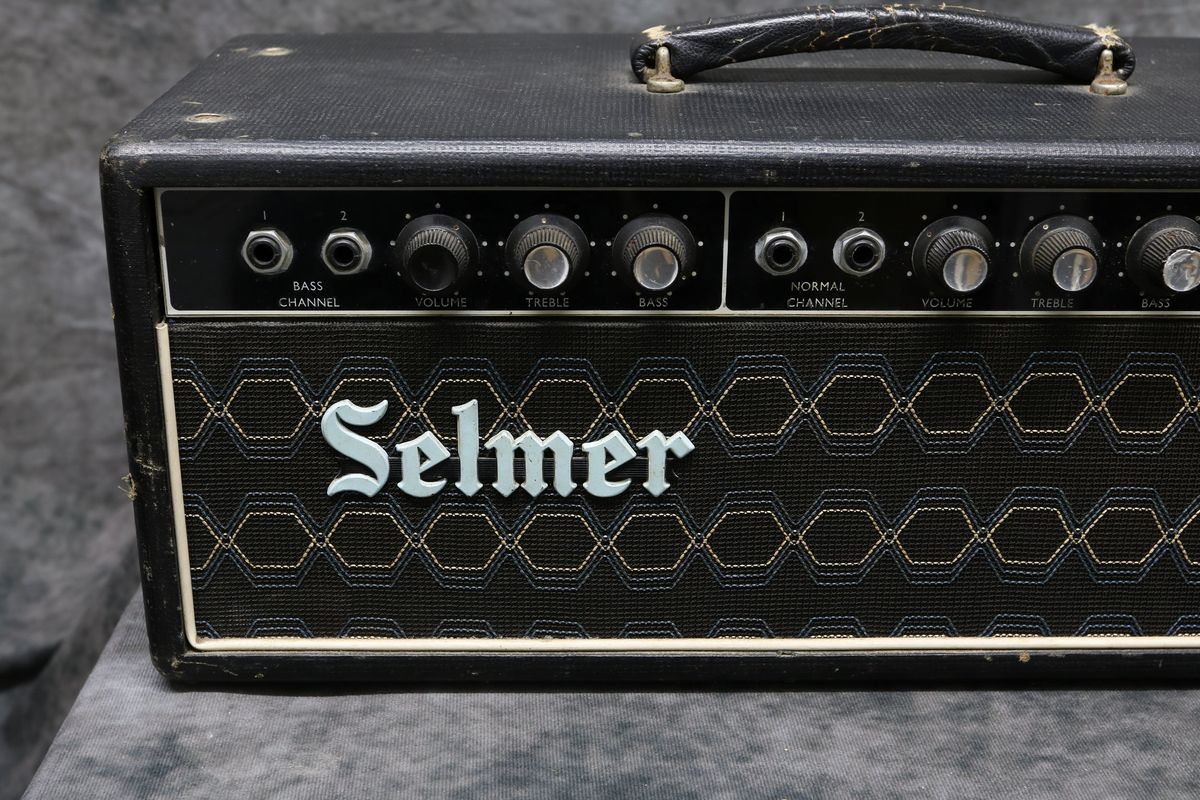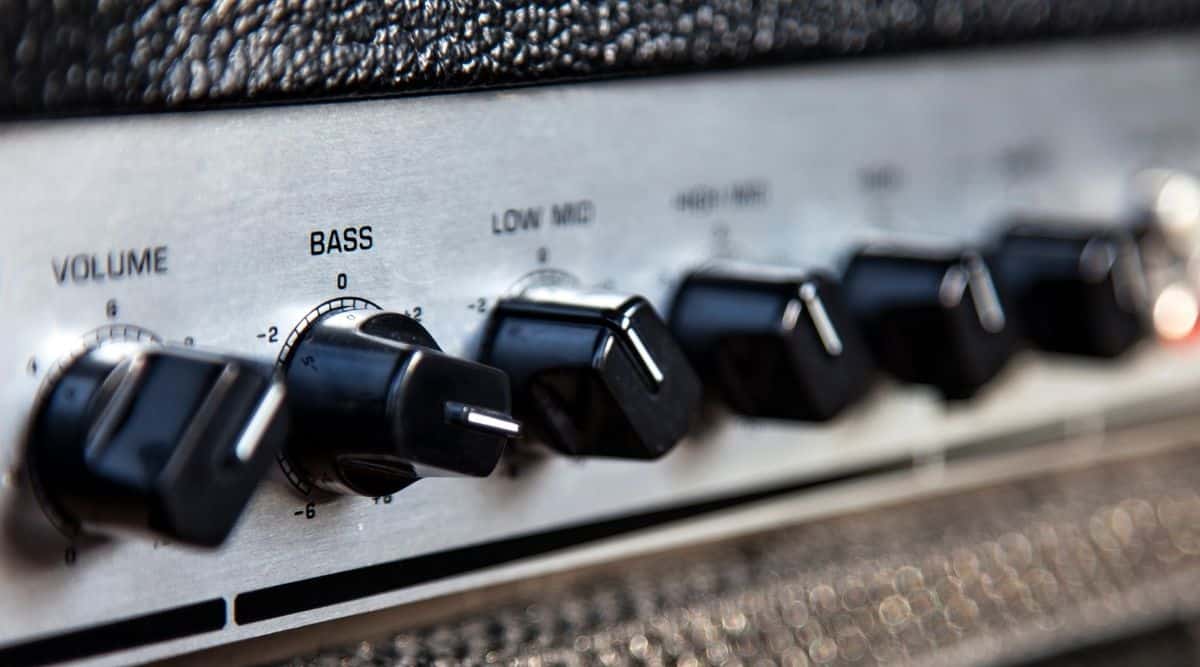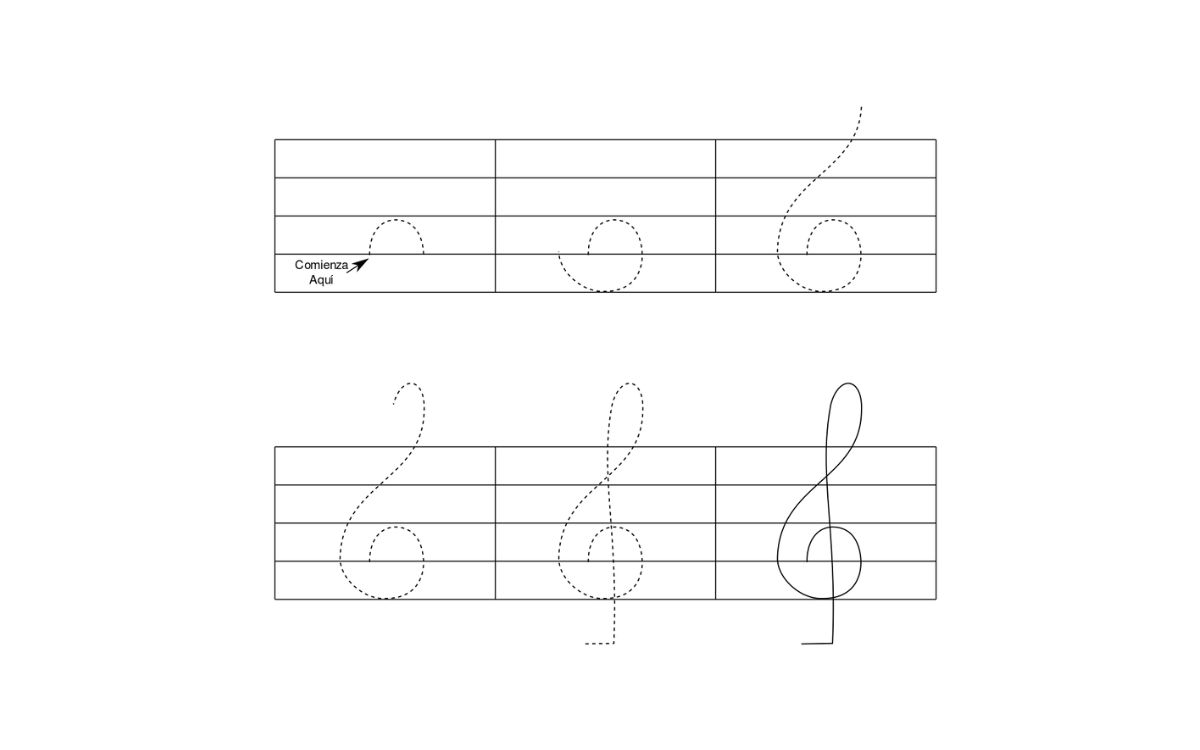Home>Production & Technology>Treble>How To Tame Treble


Treble
How To Tame Treble
Modified: February 18, 2024
Learn how to tame treble in your audio recordings. Discover techniques and tips to achieve a balanced sound and eliminate harsh high frequencies.
(Many of the links in this article redirect to a specific reviewed product. Your purchase of these products through affiliate links helps to generate commission for AudioLover.com, at no extra cost. Learn more)
Table of Contents
Introduction
Treble, often referred to as high-frequency sound, plays a crucial role in audio reproduction. It adds clarity, detail, and sparkle to music and other audio content. However, excessive treble can result in a harsh and fatiguing listening experience. It is important to find the right balance and tame treble to optimize your audio setup.
In this article, we will explore various techniques and tips for taming treble in your audio system. Whether you are an audiophile looking to fine-tune your listening experience or a sound engineer working in a professional setting, these strategies will help you achieve a more balanced and enjoyable sound.
Understanding treble is the first step in effectively managing it. Treble refers to the high-frequency portion of the audio spectrum, typically ranging from around 2,000 Hz to 20,000 Hz. It encompasses the crispness of cymbals, the shimmer of strings, and the nuances of vocals. While treble adds excitement and detail to music, excessive or harsh treble can lead to ear fatigue and an unbalanced listening experience.
To tame treble effectively, we will explore various techniques, including adjusting EQ settings, utilizing tone controls, considering room acoustics, optimizing speaker placement, investing in acoustic treatment, and implementing soundproofing solutions. These strategies work together to create a well-rounded and immersive audio experience.
By implementing the tips and techniques discussed in this article, you can achieve a more balanced audio reproduction, where the treble is controlled and harmoniously integrated with the other frequency ranges. Let’s dive into these strategies and learn how to tame treble in your audio setup.
Understanding Treble
Before diving into taming treble, it is essential to have a clear understanding of what treble is and its significance in audio reproduction. Treble refers to the high-frequency range of sound, typically ranging from around 2,000 Hz to 20,000 Hz on the audio spectrum. It is responsible for conveying the clarity, detail, and sparkle in music and audio content.
Treble plays a vital role in reproducing certain instruments and vocals. It captures the harmonics and overtones that give musical instruments their distinct character. The sound of cymbals, strings, and vocals often reside in the treble range. When balanced correctly, it adds excitement and realism to the audio playback.
However, excessive treble can result in a harsh and fatiguing listening experience. This is known as sibilance or ear-piercing sound. If the high frequencies are too dominant, it can overpower the midrange and bass frequencies, leading to an unbalanced sound reproduction.
It is important to strike the right balance between treble and other frequency ranges, such as bass and midrange. Achieving this balance ensures a more natural and enjoyable listening experience. Taming treble involves controlling and adjusting the level of high-frequency sound to achieve optimal audio reproduction.
Factors such as the audio source, equipment, and room acoustics can influence the perceived treble. Different genres of music may also have varying treble characteristics. For example, classical music may have more delicate and nuanced treble elements compared to rock or electronic music.
Understanding the significance and characteristics of treble will help you make informed decisions when it comes to taming it in your audio setup. In the next sections, we will explore various techniques and tips for effectively managing and controlling treble, ensuring a balanced and harmonious sound reproduction.
Tips for Taming Treble
Taming treble requires a thoughtful approach and a combination of techniques. Here are some tips to help you achieve a balanced and controlled treble in your audio setup:
- Adjust EQ settings: Equalizer settings allow you to modify the frequency response of your audio system. To tame treble, you can reduce the higher frequencies using the EQ controls. Experiment with slight adjustments until you find the sweet spot where the treble is balanced with the rest of the frequency range.
- Utilize tone controls: If your audio system has dedicated tone controls, such as bass and treble knobs, use them to shape the sound. Decrease the treble level slightly to soften the high-frequency response. Be mindful not to go too extreme, as it can result in a dull or muffled sound.
- Consider room acoustics: The acoustic properties of your listening room can greatly impact treble reproduction. Reflective surfaces, such as hardwood floors and bare walls, tend to enhance treble reflections, resulting in a brighter sound. Consider using carpets, curtains, or acoustic panels to absorb excess treble and create a more balanced listening environment.
- Optimize speaker placement: The placement of your speakers plays a crucial role in treble reproduction. Avoid placing speakers near reflective surfaces or corners, as this can create treble buildup and result in an imbalanced sound. Experiment with speaker positioning and toe-in angles to find the optimal balance between treble and other frequency ranges.
- Invest in acoustic treatment: Acoustic treatment, such as diffusers and absorbers, can help control treble reflections and improve overall sound quality. Diffusers scatter sound waves to reduce treble hotspots, while absorbers absorb excessive treble energy. Adding acoustic treatment to your room can create a more accurate and balanced treble response.
- Implement soundproofing solutions: External noise and vibrations can interfere with treble reproduction. Consider implementing soundproofing measures, such as sealing gaps, using soundproof curtains, or adding mass-loaded vinyl, to reduce unwanted external noise and improve treble clarity.
Remember that each audio setup is unique, and experimentation is key to finding the perfect balance of treble in your system. Take your time to fine-tune the settings and explore the different methods mentioned above to achieve an audio experience that suits your preferences.
By implementing these tips, you can effectively tame treble and create a more balanced listening experience. The goal is to achieve a harmonious and enjoyable sound reproduction, where treble enhances the overall audio without overpowering the other frequency ranges.
Adjusting EQ Settings
One of the most effective methods for taming treble in your audio system is by adjusting the EQ (equalizer) settings. EQ allows you to modify the frequency response of the sound, including the treble range. By making precise adjustments to the EQ, you can achieve a more balanced and controlled treble.
When adjusting EQ settings, it’s important to understand the frequency bands and their effect on the sound. The treble range typically starts around 2,000 Hz and extends up to 20,000 Hz. It’s in this range that you’ll find the shimmer of cymbals, the crispness of vocals, and the harmonics of various instruments.
To tame the treble, you can start by reducing the higher frequencies in this range. Many EQ systems offer individual sliders for various frequency bands, allowing you to make targeted adjustments. Begin by lowering the sliders corresponding to the upper treble frequencies, such as 12,000 Hz and above.
It’s important to approach EQ adjustments with caution. Making overly aggressive cuts in the treble range can result in a dull or muffled sound. It’s recommended to make subtle adjustments and listen carefully to ensure you maintain overall clarity and detail without excessive emphasis on the treble.
Another approach is to use a shelving EQ. This allows you to adjust the treble level across the entire high-frequency range. By reducing the treble shelf slightly, you can achieve a more balanced sound with controlled high frequencies.
Remember, EQ adjustments can also impact other frequency ranges, so listen for any potential shifts in the overall sound balance. It may be necessary to make slight adjustments to other frequency bands, such as the midrange or bass, to maintain a consistent and well-rounded sound.
It’s important to note that EQ adjustments should be made based on your personal preferences and the characteristics of your audio system. Different speakers, headphones, or audio sources may require varying EQ settings to achieve the desired sound balance.
Take the time to experiment and fine-tune the EQ settings in your audio system. Consider listening to a variety of music genres and audio content to ensure that the treble adjustments are well-suited for different types of recordings. By carefully adjusting the EQ, you can effectively tame treble and achieve the optimal sound reproduction in your audio setup.
Using Tone Controls
In addition to adjusting EQ settings, another effective technique for taming treble is utilizing the tone controls on your audio equipment. Many amplifiers, receivers, and audio devices feature dedicated bass and treble knobs that allow you to adjust these frequency ranges.
When it comes to taming treble, you can start by gently reducing the treble level using the dedicated knob or slider. By slightly attenuating the high-frequency range, you can soften the overall treble response and achieve a more balanced sound.
It’s essential to exercise caution when using tone controls to avoid going to extremes. If you decrease the treble level too much, the sound may become dull or lacking in detail. The goal is to find a sweet spot where the treble is controlled without sacrificing clarity and sparkle in the sound.
When adjusting the treble control, it’s important to listen actively and make subtle changes. Take the time to evaluate the impact of each adjustment on the overall sound. Pay attention to the tonal balance and ensure that the treble reduction doesn’t create an imbalance with the other frequency ranges, such as the midrange and bass.
Keep in mind that the effectiveness of tone controls can vary between different audio equipment and systems. Some devices may offer more precise control over the treble, while others may have a broader range of adjustment. Experiment with the settings to find the optimal balance for your specific audio setup.
Furthermore, it’s important to note that tone controls can interact with other EQ settings or audio processing features in your system. If you are already using EQ adjustments, make sure that the tone controls complement and enhance the overall sound rather than conflict with each other.
Ultimately, the goal of using tone controls is to shape the sound according to your preferences while maintaining a balanced and cohesive audio reproduction. By making subtle adjustments and actively listening, you can effectively tame treble and achieve the desired sound signature in your audio system.
Remember that everyone’s hearing and preferences are unique, so don’t be afraid to experiment and find the settings that work best for you. Trust your ears and enjoy the process of fine-tuning your audio setup to achieve a more controlled and enjoyable treble response.
Utilizing Room Acoustics
Room acoustics play a significant role in the overall sound reproduction, including the treble performance of your audio system. The characteristics of your listening room can impact how sound waves interact and reflect, potentially affecting the treble reproduction. By considering and optimizing the room acoustics, you can achieve a more balanced and controlled treble response in your audio setup.
Here are some tips for utilizing room acoustics to tame treble:
- Manage reflective surfaces: Highly reflective surfaces, such as hardwood floors, glass windows, or bare walls, can cause treble reflections and hotspots. These reflections can result in an overly bright or harsh sound. Consider adding furniture, rugs, curtains, or acoustic panels to absorb excess treble and reduce reflections.
- Strategically place furniture and objects: Furniture and objects in your room can help scatter and diffuse sound waves, reducing the negative impact of treble reflections. Place bookshelves, plants, or other decor items strategically to create a more diffuse sound field and minimize treble hotspots.
- Use bass traps: Bass traps primarily target low-frequency issues, but they can also have a positive impact on treble. By reducing excessive bass buildup in the room, bass traps can improve overall sound clarity and balance, allowing the treble to shine through more effectively.
- Consider ceiling treatments: Treble reflections from the ceiling can be particularly problematic. Using acoustic panels or diffusers on the ceiling can help control treble reflections and create a more balanced sound stage. These treatments can be especially helpful in rooms with high, reflective ceilings.
- Experiment with room layout: The placement of your speakers and listening position can affect treble performance. Avoid placing speakers too close to walls or corners, as this can lead to treble buildup. Experiment with different speaker positions and listening angles to find the optimal balance between treble and other frequency ranges.
It’s important to note that room acoustics are highly dependent on the specific characteristics of your listening space. Every room has its unique challenges and nuances. Consider consulting with an acoustics professional or conducting room measurements to get a better understanding of your room’s acoustic properties.
By utilizing room acoustics techniques, you can create a more controlled and balanced treble response. Remember to take a holistic approach and consider all aspects of the room, including furniture placement, wall treatments, and ceiling treatments. By optimizing the room acoustics, you can enhance the overall audio experience and achieve a more enjoyable listening environment.
Speaker Placement Techniques
The placement of your speakers plays a crucial role in the treble reproduction and overall sound quality of your audio system. Proper speaker placement can help tame treble by minimizing unwanted reflections and enhancing the clarity and balance of high frequencies. Here are some speaker placement techniques to consider:
- Avoid corners: Placing speakers in the corners of a room can result in excessive treble buildup and boomy bass. Corner placement tends to emphasize low frequencies and can create an unbalanced sound. Instead, position your speakers away from walls and corners to allow for better treble dispersion.
- Tilt the speakers: Tilting your speakers slightly can help direct the treble towards your listening position. This can improve the clarity and detail of high-frequency sounds. Experiment with small adjustments to find the optimal tilt angle that works best for your setup.
- Use isolation pads: Placing your speakers on isolation pads or stands can help minimize unwanted vibrations and resonances that can affect treble reproduction. Isolation pads absorb vibrations and provide a stable platform, allowing for better clarity in the high-frequency range.
- Consider the listening triangle: The listening triangle refers to the relationship between your speakers and the listening position. Position your speakers and listening position to form an equilateral triangle, with each speaker at the same distance from the listener. This setup can help optimize treble dispersion and imaging.
- Experiment with distance from walls: The distance between your speakers and the walls can impact the treble performance. Placing speakers too close to walls can create treble reflections and resonance. Experiment with different distances to find the right balance where treble has sufficient dispersion without excessive reflections.
- Consider speaker toe-in: Toe-in refers to the angle at which your speakers are pointed towards the listening position. Toe-in can affect treble clarity and imaging. Experiment with different toe-in angles to find the optimal positioning that provides a balanced treble performance and a focused soundstage.
Keep in mind that achieving the ideal speaker placement may require some trial and error. Every room is unique, and the acoustic properties can vary. Take the time to experiment with different speaker positions and listen carefully to evaluate the impact on treble reproduction.
Speaker placement is a critical aspect of optimizing treble and overall sound quality in your audio system. By considering these speaker placement techniques, you can effectively tame treble and create a more balanced and immersive listening experience.
Investing in Acoustic Treatment
Acoustic treatment is a valuable investment when it comes to taming treble and optimizing the overall sound quality of your audio system. Acoustic treatments help control reflections and resonances in your listening room, ensuring a more balanced and accurate treble reproduction. Here are some considerations when it comes to investing in acoustic treatment:
- Diffusers: Diffusers are designed to scatter sound waves in multiple directions, helping to reduce treble hotspots and prevent unwanted reflections. By strategically placing diffusers on walls or ceilings, you can achieve a more even and controlled treble response.
- Absorbers: Absorbers are typically made from materials that absorb sound energy, including treble frequencies. They help reduce excessive reverberation and prevent treble reflections. Placing absorbers strategically in your listening room can help create a more balanced and controlled treble reproduction.
- Bass Traps: While primarily targeting low-frequency issues, bass traps can also have a positive impact on treble performance. By reducing excessive bass buildup and low-end resonances, bass traps allow treble frequencies to be heard more clearly and accurately.
- Acoustic Panels: Acoustic panels are versatile treatments that combine both diffusion and absorption techniques. They are designed to control reflections and reverberations, allowing for a more balanced and controlled treble response. Acoustic panels can be placed on walls, behind speakers, or even on the ceiling, depending on the specific needs of your listening room.
- Customized Solutions: While pre-manufactured acoustic treatments are widely available, it may be beneficial to consult with an acoustics professional who can provide customized solutions tailored to your specific listening room. A professional assessment can help identify problem areas and recommend the most effective acoustic treatments for taming treble.
When investing in acoustic treatment, it’s important to consider the size and dimensions of your listening room, as well as the specific characteristics of your audio system. Different materials and treatments have varying effects on treble reproduction, so it’s important to choose treatments that align with your goals and preferences.
Remember that proper placement of acoustic treatments is crucial for their effectiveness. Experiment with different positions and configurations to achieve optimal treble control and a more balanced sound. Additionally, consider a combination of diffusers, absorbers, and bass traps to address a range of frequency-related issues and achieve an overall improved listening experience.
Investing in acoustic treatment is a long-term investment in your audio system. It helps create a more controlled and immersive listening environment, where treble is properly managed, resulting in a more enjoyable and accurate sound reproduction.
Soundproofing Solutions
While not directly related to taming treble, soundproofing solutions can indirectly contribute to a better treble experience by minimizing external noise and vibrations that can interfere with the overall sound quality. By reducing unwanted noise contamination, soundproofing allows the treble to be heard with greater clarity and detail. Consider the following soundproofing solutions:
- Seal gaps and cracks: Take the time to inspect your listening room for any gaps or cracks that allow external noise to enter. Seal these openings with weatherstripping or caulk to minimize sound leakage and create a more isolated listening environment.
- Use soundproof curtains: Heavy-duty soundproof curtains not only add an aesthetic touch to your room but also provide effective noise insulation. These curtains block external noise from entering and help minimize sound reflections that can affect treble reproduction.
- Add carpet or rugs: Hard surfaces like hardwood floors can contribute to sound reflections and echoes, which can impact treble performance. Adding carpets or rugs to the room helps absorb sound and reduce these unwanted reflections, leading to improved treble control.
- Install mass-loaded vinyl: Mass-loaded vinyl (MLV) is a dense material that effectively blocks sound transmission. By adding MLV to walls or ceilings, you can reduce external noise and prevent it from seeping into your listening space. MLV can be especially beneficial in areas with high exterior noise levels.
- Consider acoustic doors: Standard doors are often not effective at blocking sound. Upgrading to acoustic doors, which have specialized construction and insulation, can significantly reduce sound transmission and improve the overall soundproofing of your room.
While complete soundproofing may be challenging or impractical in some situations, even small measures can make a noticeable difference in reducing noise contamination and enhancing treble reproduction. Combining multiple soundproofing solutions tailored to your specific needs can have a cumulative effect on creating a more controlled and immersive listening environment.
Keep in mind that soundproofing solutions should be approached in conjunction with other techniques for optimal treble management. Proper speaker placement, acoustic treatment, and EQ adjustments should be utilized alongside soundproofing measures to ensure a balanced and controlled treble experience.
By implementing soundproofing solutions, you can minimize external disturbances and create a more isolated listening environment, allowing the treble to shine through with greater clarity and accuracy.
Conclusion
Taming treble in your audio system is essential for achieving a balanced and enjoyable sound reproduction. Excessive treble can lead to ear fatigue and an unbalanced listening experience, while inadequate treble can result in a lack of clarity and detail. By implementing the techniques and tips discussed in this article, you can successfully manage and control treble in your audio setup.
We started by understanding treble and its significance in audio reproduction. Treble adds clarity, detail, and sparkle to the sound, but excessive treble can be harsh and fatiguing. Finding the right balance between treble and other frequency ranges is crucial.
We then explored various strategies for taming treble, such as adjusting EQ settings and utilizing tone controls. These methods allow you to fine-tune the treble response according to your preferences and the characteristics of your audio system.
Additionally, we discussed the importance of considering room acoustics, speaker placement techniques, and investing in acoustic treatment. By managing reflective surfaces, optimizing speaker positioning, and implementing diffusers, absorbers, and bass traps, you can enhance treble control and achieve a more accurate and balanced sound reproduction.
Finally, we explored the value of soundproofing solutions in reducing external noise and vibrations that can interfere with treble performance. By minimizing unwanted noise contamination, you can create a more isolated listening environment where treble can be heard with greater clarity and detail.
In conclusion, taming treble requires a multi-faceted approach that encompasses adjustments to EQ settings, utilizing tone controls, optimizing room acoustics, speaker placement, investing in acoustic treatment, and considering soundproofing solutions. By integrating these techniques into your audio setup, you can achieve a well-balanced and controlled treble, allowing for a more enjoyable and immersive listening experience.
Remember, every audio system and listening room is unique, so don’t be afraid to experiment and fine-tune the settings to find the optimal balance for your preferences. Trust your ears and enjoy the process of taming treble to create the perfect sonic landscape for your audio enjoyment.











